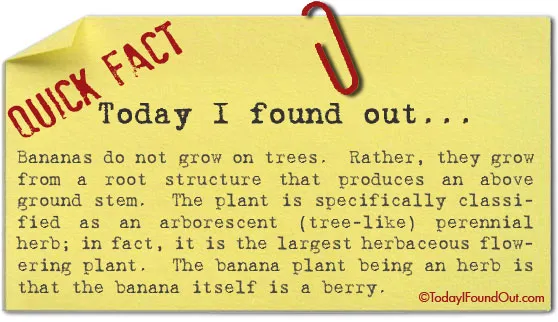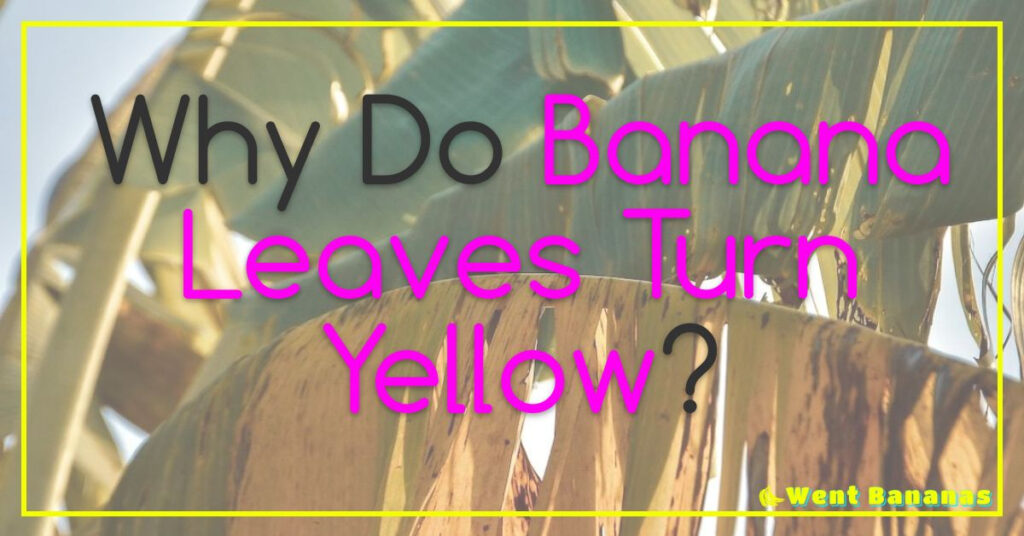Bananas: they`re a popular and beloved fruit that have been around for centuries. But did you know that bananas are not actually trees? Despite their common perception as such, bananas are actually classified as herbs.

In this article, we`ll explore the many misconceptions surrounding bananas and their classification. We’ll delve into their scientific classification, the characteristics of banana plants that differentiate them from trees, and even the historical and cultural significance of bananas as an herb rather than a tree.
If you`re someone looking to learn more about bananas and why they’re not considered trees in the botanical world, keep reading; we’ve got you covered.
What are bananas, and how are they commonly perceived as trees?

Bananas are a fascinating fruit with a rich history and cultural significance. Despite their classification as a berry, they are commonly perceived as trees due to their tall and robust appearance.
Bananas originate from the Musaceae family, which includes both sweet and savory varieties. They grow in clusters on herbaceous plants that can reach up to 25 feet in height. The plant’s stem is not actually wood but rather a tightly packed bundle of leaf sheaths.
What makes bananas particularly unique is their cultivation process. They require specific growing conditions such as warm temperatures, ample moisture, and fertile soil. Furthermore, they are often harvested while still green and ripen off the plant.
Throughout history, bananas have played an important role in various cultures around the world. From ancient civilizations using them for medicinal purposes to modern-day society consuming them for their nutritional value, bananas have always been an important part of human life.
Despite being classified as a fruit with scientific evidence supporting this claim, many people still perceive bananas as trees due to their outward appearance. Nevertheless, it is important to recognize the true nature of this beloved fruit and appreciate its many benefits beyond just its tree-like qualities.
The scientific classification of bananas and why they are actually herbs?
Bananas are not just a fruit, but rather an herbaceous plant. They belong to the Musaceae family which includes over 70 species of flowering plants. This classification is based on the structure and growth habit of the plant, rather than its taste or culinary use.
The banana plant is unique in that it grows from a rhizome or underground stem, producing a single leaf at a time. Once several leaves have formed, the stem produces a large inflorescence or flower cluster that eventually becomes the familiar yellow fruit we all know and love.
But why are bananas considered herbs? Unlike trees which have woody stems and branches that grow year after year, banana plants die back to their roots each season. This makes them more similar to other herbaceous plants like herbs used in cooking such as basil or parsley.
Additionally, bananas reproduce through vegetative propagation rather than seeds like most fruits. New plants grow from rhizomes or suckers which sprout off the main stem of an existing plant. This means that each banana tree is actually genetically identical to its parent, making them more akin to herbaceous perennials like mint or thyme.
So next time you enjoy a delicious banana smoothie or slice of banana bread, remember that you are actually indulging in an herb! The scientific classification may be surprising but it doesn’t change the fact that bananas are still one of our favorite fruits – no matter what you call them!
The characteristics that differentiate banana plants from trees.

Banana plants are often mistaken for trees due to their tall and sturdy appearance. However, there are several characteristics that differentiate them from actual trees.
Firstly, banana plants do not have a woody stem like trees do. Instead, their stems are made up of layers of tightly packed leaves called pseudostems. This unique characteristic allows banana plants to grow quickly and efficiently without the need for extensive root systems.
Secondly, unlike trees which typically produce their fruit on branches or twigs, bananas grow their fruit in large clusters called hands that emerge from the top of the plant’s pseudostem. This makes harvesting much easier as all the fruit can be harvested at once without having to climb or reach for individual pieces.
Lastly, banana plants are able to reproduce through vegetative propagation rather than seed production like most other plants. This means that new banana plants can be grown by simply taking a cutting from an existing plant and replanting it.
Understanding these unique characteristics is important for those looking to cultivate or harvest bananas as it requires specialized knowledge and techniques compared to traditional tree farming methods. By recognizing these differences between bananas and trees, one can appreciate the intricacies of this versatile crop and its importance in global agriculture.
The historical and cultural significance of bananas as a herb rather than a tree.
While bananas are commonly known as a fruit that grows on trees, they are actually classified as an herb. This fact may come as a surprise to many, but it has significant historical and cultural significance.

« The Ultimate Guide to Safely Cutting Bananas for Your Baby’s First Food
How to Make Delicious Banana Bread with Honey: Step-by-Step Recipe and Expert Tips »
Bananas have been cultivated for thousands of years and were first domesticated in Southeast Asia. They were then introduced to other parts of the world through trade routes and migrations. Throughout history, bananas have played a crucial role in the diets of people living in tropical regions.
In many cultures, bananas hold symbolic meaning and are used in various rituals and ceremonies. In Hinduism, for example, bananas are offered to deities during puja (worship) ceremonies. In some African cultures, banana leaves are used to wrap food or create baskets for carrying goods.
The medicinal properties of bananas have also been recognized throughout history. In traditional medicine practices such as Ayurveda and Chinese medicine, different parts of the banana plant (such as the fruit, leaves or flowers) have been used to treat various ailments.
Overall, understanding the historical and cultural significance of bananas can deepen our appreciation for this versatile plant. It is not just a tasty snack or ingredient in recipes – it holds deep meaning for many people around the world.
Check out our other articles to find out even more about banana.
This article has provided a better understanding of the plant we know as banana, and why it is technically not considered a tree. It’s important to note that while bananas are herbs rather than trees they still have significant historical and cultural meaning in many parts of the world. To learn more about this unique fruit-bearing herb, be sure to check out our other articles to find out even more about banana.










